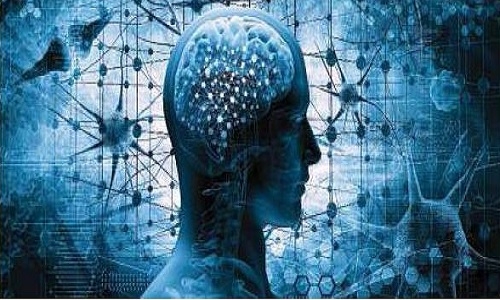Understanding human mind through yoga & psychology
Date :15-Oct-2023

BY DR BHUSHAN KUMAR UPADHYAYA :
Human mind has been a hot
topic of discussion since
time immemorial.
Philosophy, literature, Yoga,
mythology, Psychology etc, all have
focussed on the human mind and
described it in various ways. We
find sufficient discussion on the
human mind in the Vedic literature
specially Upanishads. The
Kathopanishad gives the allegory of
a chariot. The human body is the
chariot, sense organs are horses,
the mind is the rein, intellect is the
charioteer and the soul is the rider.
In the Bhagavad Gita Lord Krishna
has delved very deep into the subject of the mind and its related
aspects. The entire philosophy and
mind control techniques have been
beautifully recapitulated by the
sage Patanjali in his celebrated
treatise PatanjalYoga Sutras.
According to theYogic tradition
the mind is the part of the cosmic
consciousness which gets expressed
through our brain and works
through sense organs. It has been
given various technical names ,
Mana, Chitta, Ahankara, Buddhi.
When thoughts arise in consciousness, but are still dormant, this is
Mana. When Mana gets activated, it
turns into Chitta.
The intellectual
and discriminative faculty of the
mind is Buddhi. Ahankara is that
potential of the mind which distinguishes and differentiates one
object from another. Mana, Buddhi,
Ahankara and Chitta are collectively
called Antahkarana or the inner
instruments of cognition. In
English language we don't find the
substitutes of these Sanskrit words.
So English word mind is generally
used to denote all these different
dimensions of cognitive functions.
The mind is called the cause of
the bondage as well as liberation of
human beings. Hence the Indian
tradition prescribes numerous
methods first to purify the mind
and later on to transcend it.
Transcendence of the mind is a
mystic concept where all thoughts
are eliminated and pure consciousness shines forth. This is the Chit,
pure consciousness.
Different devotional, intellectual,
Yogic and Tantric techniques are
described in the Indian tradition to
calm and quieten the mind. In
devotional tradition Nama Japa or
chanting the name of the Divine is
believed to purify the mind. This
method we find in all the religions
of the world.
The second devotional
technique is the surrender to the
Divine, which dissolves all ego and
mental entanglement. In the intellectual path the enlightenment
comes when the things are seen as
they are. There are no judgemental
concepts. By seeing the things as
they are, one comes face to face to
the ultimate reality. Yoga elevates
human consciousness through
Pranayama, breathing techniques
and Dhyana, meditation. Tantric
tradition is based upon the arousal
of the dormant energy which is
stuck in the lower part of the body
and makes it move upwards to
unite with the Supreme
Consciousness in the brain. This is
KundaliniYoga.
In Psychology, Freud was the first
person to study the human mind in
a scientific way. According to
Freud, the human mind has three
layers, conscious, subconscious
and unconscious. According to
him,the unconscious layer plays
the most important role. It is the
root which controls and affects the
superficial level of consciousness.
All beliefs, phobias, complexes, etc
are stored in it. It is beyond our
control and reach. Again he talked
of Id - our instincts, Ego-intellect
and Superego- parental teaching
and cultural training. There is
alwaysaconflict between these
three aspects of the mind. Instinct
wants to do something, but the
intellect and learning negate it.
Similarly, the intellect desires to do
something, but the culture stops it .
According to Freud, these conflicts
lead to mental disorder, neurosis
and psychosis.
As a remedy to correct these mental problems, Freud
propounded the theory of
Psychoanalysis. Before doing psychoanalysis, one has to first do self
analysis. Through the process of
self analysis one can understand
the mind of others. In this context
Freud has emphasised the importance of religion and culture also
which go a long way in cultivating
the human unconscious. Dream
theory of Freud is also very important to understand the unconscious. Carl Jung is another master
of the study of the mind. His most
important theory is the Collective
Unconscious which is genetically
derived through generations.
The earlier psychological theories are mostly pathological, but
with the emergence of Positive
Psychology and the elasticity theory of the brain, it is proved that the
human brain can be improved
through different techniques and
methods. In the Indian tradition
such techniques have already been
prescribed thousands of years ago.

(The writer is DG Police & CG,
Homeguards, Maharashtra)